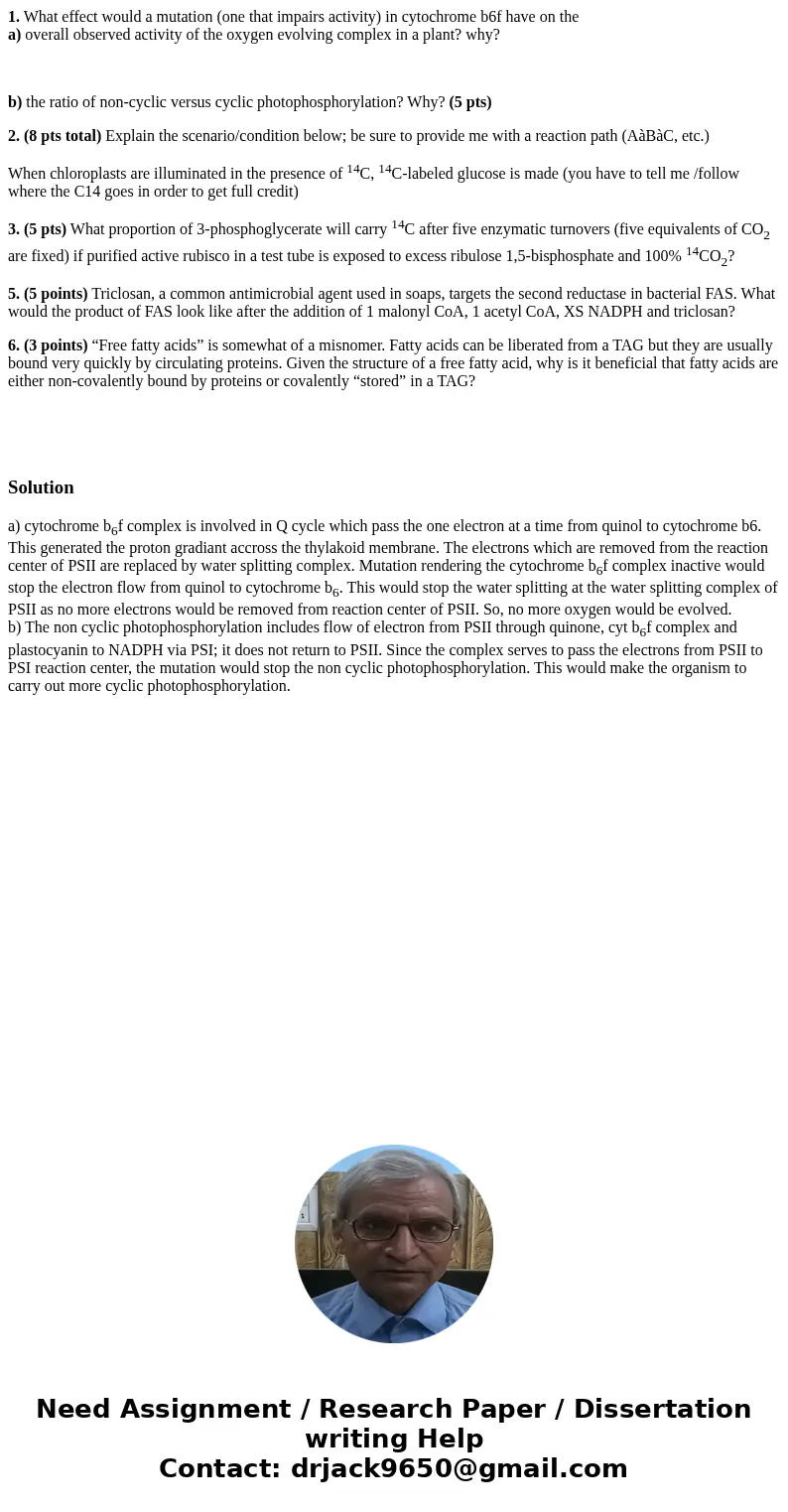1 What effect would a mutation one that impairs activity in
1. What effect would a mutation (one that impairs activity) in cytochrome b6f have on the
a) overall observed activity of the oxygen evolving complex in a plant? why?
b) the ratio of non-cyclic versus cyclic photophosphorylation? Why? (5 pts)
2. (8 pts total) Explain the scenario/condition below; be sure to provide me with a reaction path (AàBàC, etc.)
When chloroplasts are illuminated in the presence of 14C, 14C-labeled glucose is made (you have to tell me /follow where the C14 goes in order to get full credit)
3. (5 pts) What proportion of 3-phosphoglycerate will carry 14C after five enzymatic turnovers (five equivalents of CO2 are fixed) if purified active rubisco in a test tube is exposed to excess ribulose 1,5-bisphosphate and 100% 14CO2?
5. (5 points) Triclosan, a common antimicrobial agent used in soaps, targets the second reductase in bacterial FAS. What would the product of FAS look like after the addition of 1 malonyl CoA, 1 acetyl CoA, XS NADPH and triclosan?
6. (3 points) “Free fatty acids” is somewhat of a misnomer. Fatty acids can be liberated from a TAG but they are usually bound very quickly by circulating proteins. Given the structure of a free fatty acid, why is it beneficial that fatty acids are either non-covalently bound by proteins or covalently “stored” in a TAG?
Solution
a) cytochrome b6f complex is involved in Q cycle which pass the one electron at a time from quinol to cytochrome b6. This generated the proton gradiant accross the thylakoid membrane. The electrons which are removed from the reaction center of PSII are replaced by water splitting complex. Mutation rendering the cytochrome b6f complex inactive would stop the electron flow from quinol to cytochrome b6. This would stop the water splitting at the water splitting complex of PSII as no more electrons would be removed from reaction center of PSII. So, no more oxygen would be evolved.
b) The non cyclic photophosphorylation includes flow of electron from PSII through quinone, cyt b6f complex and plastocyanin to NADPH via PSI; it does not return to PSII. Since the complex serves to pass the electrons from PSII to PSI reaction center, the mutation would stop the non cyclic photophosphorylation. This would make the organism to carry out more cyclic photophosphorylation.

 Homework Sourse
Homework Sourse